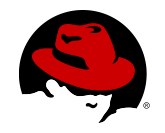Ever since it was apparent that Red Hat would become the first billion-dollar Linux company, fans of free and open source software have held the company up as the poster child for Linux’s business success.
 That milestone was officially achieved earlier this year, but somehow the good news about Red Hat just keeps on coming.
That milestone was officially achieved earlier this year, but somehow the good news about Red Hat just keeps on coming.
Case in point: On top of the ever-rosy financial results it continues to report — the most recent of which were announced last month — Red Hat was also recently named by Forbes magazine the fourth most innovative company in both the United States and the world.
Forbes ranked companies using an “Innovation Premium” that measures cash flow, anticipated growth, and current market capitalization. “The idea of transparency and collaboration infuse the entire business,” the magazine said about Red Hat. “Even its mission statement was a group effort.”
Given the ongoing nature of Red Hat’s success, there are surely lessons to be learned from the company’s example. For more insight on that question, Linux.com recently spoke with DeLisa Alexander, the company’s executive vice president and chief people officer, and Jay Lyman, a senior analyst with 451 Research.
‘It Continues to Do It Right’
“Red Hat is a mission-based company, and the people we hire are passionate about what we do — it’s been that way from the very beginning,” Alexander told Linux.com. “We built a billion-dollar business by doing what the industry said was impossible: selling free software.
“We’ve never been afraid to try new things or take a chance on a wild idea,” Alexander added. “The combination of our unique company culture, the open source approach to software development, and Red Hat’s decision to sell software subscriptions rather than licenses is a business model innovation that continues to drive our success.”
Indeed, “they had to go through a number of years of skepticism and lack of credibility, but they built that up over the years,” Lyman said.
The technology, of course, is a big part of the company’s success. “Red Hat has really dedicated itself to stability and enterprise-grade, production-ready Linux,” Lyman explained. “Another part comes from their focus on the enterprise server market — Red Hat has really maintained its enterprise credibility.”
In short, “not only has Red Hat been around for a while, but it continues to do it right,” Lyman added.
‘Freedom and Flexibility’
Red Hat’s use of a subscription model is a key differentiator that gives customers better control over their IT spend, Alexander pointed out.
“While proprietary software companies built their business models around locking in their customers, we worked hard to give ours freedom and flexibility,” she explained. “We built a vast ecosystem of partners, working together to certify their technologies on Red Hat Enterprise Linux so that customers could deploy their choice of applications and hardware.”
Red Hat also promoted open standards to give customers ownership of their data by making it portable among vendors, she noted, and it has always used open source licensing. It has also developed its software openly and in collaboration with customers, partners, and other contributors to build software that solves business problems.
“This community-powered innovation model is unusual and leads to high performance/high value solutions for our customers,” Alexander said. “Notably, we are using this model beyond Linux.”
‘A Community-Powered Approach’
Indeed, Red Hat’s close community connection has been a key factor in its success, both Alexander and Lyman said.

“The experience of working with and contributing to open source communities helped us develop a community-powered approach to innovation, which brings superior value and performance to our customers,” Alexander pointed out. “Our culture reflects the values of the open source developer community: We believe in transparency, meritocracy, collaboration, and rapid iteration.”
So strategic an advantage is that culture for the company, in fact, that it goes to great lengths to understand and sustain it. “For example, in our training and development programs, we explore what great Red Hat leadership looks like,” she noted. “As a company, we cultivate the behaviors that we believe result in a differentiated work experience for our associates, including trust, respect, transparency, collaboration, meritocracy, and connection.”
‘It’s Becoming a Challenge’
The advent of cloud computing has brought a new ubiquity to Linux and open source technologies, Lyman pointed out, and customers are increasingly seeking out open solutions and multivendor approaches.
That’s clearly an opportunity for open source companies, but along with that opportunity comes new challenges for Red Hat.
“It’s becoming a challenge for Red Hat to be as unique as it once was,” Lyman explained. “They’re challenged now, in fact, by being perceived as the very thing they were established to disrupt, and that’s the ‘all-in-one’ solution from one vendor.”
‘We See a Bright Future’
Still, “Red Hat continues to really lead in the way they manage their open source community and their commercial prospects,” he concluded. “They have displayed the ability to leverage that community without offending it, and there will always be advantages Red Hat can offer with its Linux.”
Indeed, “open source is a great way to make better technology faster, so we see a bright future for open source technologies,” Alexander said. “Open source companies, including Red Hat, will continue to find success in IT by collaborating with developers and enterprises to create the flexible and high performing solutions that they need.”


